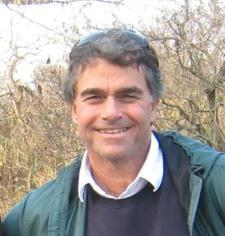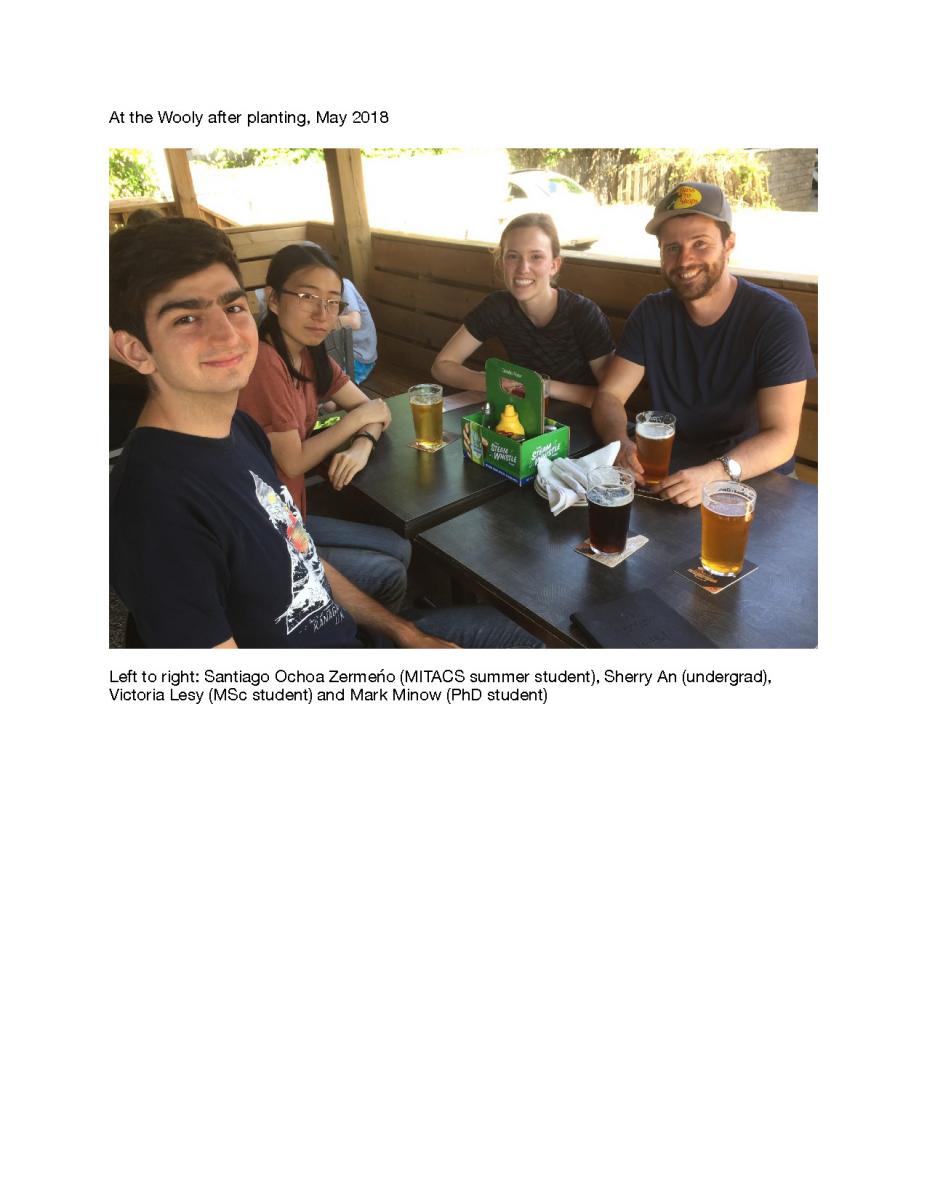Dr. Joe Colasanti

- B.Sc. - Western
- Ph.D. - Western
- Post Doctoral Associate - Cold Spring Harbor, NY
- Research Investigator - University of California, Berkeley
One of the fundamental questions in plant biology concerns the nature of the signals that bring about the transition from vegetative to reproductive growth. My research is aimed at characterizing the developmental signals that cause plants to flower. The primary focus of this work is the maize indeterminate gene (id1). Maize plants that lack id1 function flower extremely late, or not at all, and they exhibit abnormal flower development. The ID1 protein contains zinc-finger motifs, suggesting that it regulates the expression of other genes. Expression analysis reveals that id1 mRNA is expressed only in leaf tissue, suggesting that ID1 acts by controlling the production of leaf-derived signals that mediate the transition to flowering. Molecular, genetic and biochemical approaches are being used to identify the targets of the id1 gene. We are also using cDNA microarrays to generate a molecular profile of the differences between leaves that transmit flowering signals from mutant leaves that are defective in this function.
Other projects in the lab center on using genomics technology to identify and characterize genes that control flowering time, as well as cell division genes that are important for growth and development in maize and other plants.
- M.A.A. Minow, L.M. Ávila, K. Turner, E. Ponzoni, I.Mascheretti, F.M. Dussault, L. Lukens, V. Rossi, and J. Colasanti, 2018. Distinct gene networks modulate floral induction of autonomous maize and photoperiod-dependent teosinte. Journal of Experimental Botany 69: 2937-2952.
- I. Mascheretti, K. Turner, R. S. Brivio, A. Hand, J. Colasanti*, and V. Rossi, 2015. Florigen-Encoding Genes of Day-Neutral and Photoperiod-Sensitive Maize Are Regulated by Different Chromatin Modifications at the Floral Transition. Plant Physiology 168: 1-13
- C.P. Coelho, M.A.A.M. Minow, A. Chalfun-Junior and J. Colasanti, 2014. Putative sugarcane FT/TFL1 genes delay flowering time and alter reproductive architecture in Arabidopsis. Frontiers in Plant Life Sciences: Genetics and Genomics 1-12 doi: 10.3389/fpls.2014.00221.
- M. Misyura, D. Guevara, S. Subedi, D. Hudson, P.D. McNicholas, J. Colasanti and S.J. Rothstein, 2014. Nitrogen limitation and high-density responses in rice suggest a role for ethylene in intraspecific competition. BMC Genomics (in press).
- D.M. Liu, D. Wang, Z. Qin, D. Zhang, L. Yin, L. Wu, J. Colasanti, A. Li and L. Mao, 2014. The SEPALLATA MADS-box protein SLMBP21 forms protein complexes with JOINTLESS and MACROCALYX as a transcription activator for development of the tomato flower abscission zone. Plant Journal 77: 284-296.
- C. Liseron-Monfils, Y. Bi, G.S. Downs, W. Wu, T. Signorelli, G. Lu, X. Chen, E. Bondo, T. Zhu, L.N. Lukens, J. Colasanti, S.J. Rothstein and M. N. Raizada, 2013. Nitrogen transporter and assimilation genes exhibit developmental stage-selective expression in maize (Zea mays L.) associated with distinct cis-acting promoter motifs. Plant Signalling and Behaviour 8:10, e26056.
- Gregory S. Downs, Y. Bi, Joseph Colasanti, X. Chen, T. Zhu, S.J. Rothstein and L.N. Lukens, 2013. A developmental transcriptional network for Zea mays defines coexpression modules. Plant Physiology 161: 1830-1843.
- Maksym Misyura, Joseph Colasanti and S.J. Rothstein, 2012. Physiological and genetic analysis of Arabidopsis thaliana anthocyanin biosynthesis mutants under chronic adverse environmental conditions. Journal of Experimental Botany 64: 229-240.
- Carla Coelho, A.P. Costa Netto, Joseph Colasanti and A. Chalfun Júnior, 2012. A proposed model to the flowering signaling pathway of sugarcane under the photoperiodic control. Genetics and Molecular Research 12: 1347-1359
- Viktoriya Coneva, David R. Guevara., Steven J. Rothstein and Joseph Colasanti. 2012. Transcript and metabolite signature of maize source leaves suggests a link between transitory starch to sucrose balance and the autonomous floral transition. Journal of Experimental Botany.
- Chloë Lazakis, Viktoriya Coneva and Joseph Colasanti. 2011. ZCN8 encodes a potential orthologue of Arabidopsis FT florigen that integrates both endogenous and photoperiod flowering signals in maize. Journal of Experimental Botany. 62: 4833-4842.
- Hiromi Ogasawara, Ryuji Kaimi, Joseph Colasanti and Akiko Kozaki. 2011. Activity of transcription factor JACKDAW is essential for SHR/SCR-dependent activation of SCARECROW and MAGPIE and is modulated by reciprocal interactions with MAGPIE, SCARECROW and SHORT ROOT. Plant Molecular Biology 77: 48999.
- Mahmoud W. Yaish, Joseph Colasanti and Steven J. Rothstein. 2011. The role of epigenetic processes in controlling flowering time in plants exposed to stress. Journal of Experimental Botany 62: 3727-3735.
- Joseph Colasanti and Viktoriya Coneva. 2009. Mechanisms of floral induction in grasses: something borrowed, something new. Plant Physiology 149: 56-62.
- Soon Ju Park, Song Lim Kim, Shinyoung Lee, Byoung Il Je, Hai Long Piao, Sung Han Park, Chul Min Kim, Choong-Hwan Ryu, Su Hyun Park, Yuan-hu Xuan, Joseph Colasanti, Gynheung An and Chang-deok Han. 2008. Rice Indeterminate1 (OsId1) is necessary for the expression of Ehd1 (Early heading date1) regardless of photoperiod. Plant Journal 56: 1018-1029.
- Mimi Tanimoto, Reynald Tremblay and Joseph Colasanti, 2008. Altered Gravitropic response, amyloplast sedimentation and circumnutation in the Arabidopsis shoot gravitropism 5 mutant are associated with reduced starch levels. Plant Molecular Biology 67, 57-59.
- Joseph Colasanti and Michael Muszynski, 2008. Genetic Regulatory Mechanism of Floral Induction in Maize. in The Maize Handbook, Vol. 1: The Biology of Maize. Eds. Sarah Hake and Jeff Bennetzen, Springer-Verlag.
- Viktoriya Coneva, Tong Zhu and Joseph Colasanti, 2007, Expression differences between normal and indeterminate1 maize suggest downstream targets of ID1, a floral transition regulator in maize. Journal of Experimental Botany 58, 3679-3693.
- Ada YM Wong and Joseph Colasanti, 2007. Maize floral regulatory protein INDETERMINATE1 is localized to developing leaves and is not altered by light or the sink/source transition. Journal of Experimental Botany 58, 403-414.
- J. Colasanti, R. Tremblay, AYM Wong, V. Coneva, A. Kozaki and B.K. Mable, 2006, The maize INDETERMINATE1 flowering time regulator defines a highly conserved zinc finger protein family in higher plants. BMC Genomics7, 158
- Reynald Tremblay and Joseph Colasanti, 2006. Mechanisms of Floral Induction in Flowering and Its Manipulation. Vol. 20, p28-48. Ed. Charles Ainsworth, Oxford University Press.
- Joseph Colasanti, 2005. Decoding the Floral Stimulus: What’s next? Flowering Newsletter40: p24-26.
- Akiko Kozaki, Sarah Hake and Joseph Colasanti, 2004, The maize ID1 flowering time regulator is a zinc finger protein with novel DNA binding properties. Nucleic Acids Research 32, 1710-1720
- Joseph Colasanti and Venkatesan Sundaresan, 2000. Florigen enters the Molecular Age: Long Distance Signals that cause Plants to Flower. Trends in Biochemical Sciences 25, 236-240.
- Paula McSteen, Debbie Laudencia-Chingcuanco and Joseph Colasanti, 2000. A floret by any other name: control of meristem identity in maize. Trends in Plant Sciences 5, 61-66.
- Joseph Colasanti, Zhuang Yuan and Venkatesan Sundaresan, 1998. The indeterminate Gene Encodes a Zinc-finger Protein and Regulates a Leaf-generated Signal Required for the Transition to Flowering in Maize. Cell 93, 593-603.
Current
- BIOL*1090 Introduction to Molecular & Cellular Biology
- BOT*3310 Plant Growth and Development
- MCB*6500/7500 MSc/PhD Research Topics
Previous
- MBG*4110 Advanced Concepts in Genetics
-
Dr. You Wang - Technician
-
Zuhaa Ali - Technician
-

